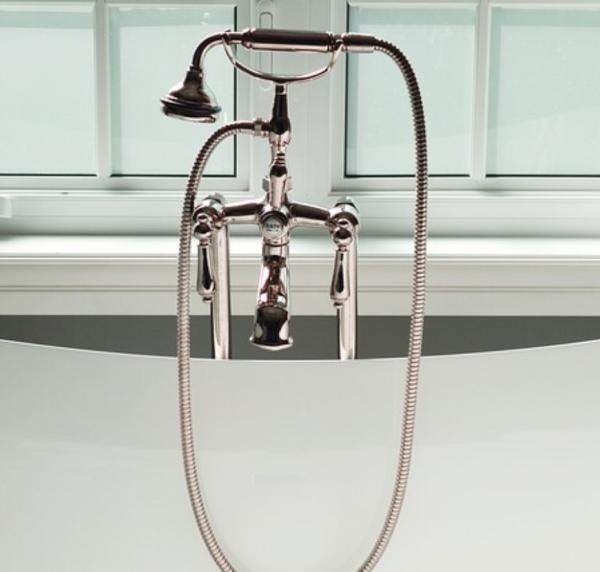A tragic death befell a toddler in Brooklyn, NY after reports claim "his father apparently attempted to cure his chronic cough with a home remedy that included leaving the baby alone in a steamy bathroom." As per the NY Daily News, sources insist police believe the father intended only to help the child and his bad cough.
The one-year old was found unresponsive and EMS services responded, but the child died in transit before hospital arrival. In these media announcements, sources suggested Mordechai Halpern "previously had bronchitis" and due to his "coughing again" his father gave "him a mixture of lemon, sugar and water" in a bottle and proceeded to take him to the bathroom to turn on "hot water in the shower and left the baby alone in a stroller near the toilet." They further state the father fell asleep whether by accident or on purpose is unclear and the child was found to be "unconscious" by the mother.
The published accounts say the police found no evidence of trauma and the cause of death is being determined by the medical examiner. Little other information has been publicly disclosed other than the toddler's temperature was 108 degrees and he was strapped into his stroller covered in a blanket.
Clarifying the clinical picture...
Early reports of these events, like most narratives that are media-driven in real time, tend to get the facts somewhat right. This means other facts are somewhat wrong. As I always say with respect to the medical realm, good information saves lives and bad information can end them. A detailed and accurate timeline in unison with a thorough examination by the medical examiner will be the optimal means to determine actual events and contributing factors. Speculation by whisper-down-the-lane publishing of "sources" routinely clouds the story and perpetuates untruths.
That said, we can learn some lessons from these early accounts. For one, "bronchitis" is a term for a condition that impacts older children. In early infancy and this age, the more likely experience is "bronchiolitis" which is typically caused by viral infections, most commonly respiratory syncytial virus (RSV). The distinction between the two rests in pulmonary (or lung, respiratory system) anatomical differences in the different phases of development and maturity along with a host of other factors including how treated and clinical manifestations. RSV-bronchiolitis can lead to hospitalizations more often in early infancy-- especially in premature infants and those more susceptible with underlying heart or lung diseases-- and supportive measures are required. The bigger and older ones tend to have more mild courses, but it is certainly individual-dependent.
So, now you can appreciate how routinely misinformation spreads. Wrong information is equal to no information-- good, bad or indifferent. What genuinely occurred will be revealed with time and further disclosure.
The descriptions of this child's cough range from "bad" to "chronic" to "coughing again after a previous bronchitis." The precise history here matters. A bad cough in the general population can be from an acute infection to allergic exposure to asthma exacerbation to reflux to what-have-you. A chronic cough will indicate certain things that are dissimilar to a recurrence after a recent "bronchitis." The only thing that can be gleaned from published reports is the existence of a cough. Nothing more, nothing less. All coughs are not the same, so the approaches to them are highly dependent on the etiology of disease.
Because young children cannot blow there nose and get rid of mounting congestion or cough and spit stuff out, intermittent exposure to the steamed up bathroom can be a helpful endeavor with a run-of-the-mill cold. This is also a useful measure in a croup-sufferer. Croup is a common condition in this age group that amounts to irritation and inflammation of the upper airway. It can become severe as worsening of upper airway narrowing can put a child in respiratory distress warranting a trip to the emergency room for stabilizing rescue interventions. In more mild cases, the young child will make unique sounds and the situation can be managed at home with frequent, but brief trips to the steamed up bathroom. This is usually triggered by a viral infection.
When a person, let alone a child, has an infection, his metabolism and immune system revs up to combat it. The body is under stress and is in overdrive. With every escalation of core body temperature, one's heart rate rises with increasing energy expenditure and so on. Maintaining ideal hydration to compensate for the losses that occur with fever, chills and sweats, and ultimate diminished fluid intake from not feeling well help prevent complicating dehydration. So, a blanket plus what might have been a couple hours in an unrelenting hot, steamy bathroom places the body under even more stress--which is only exacerbated by a lack of cooling and aggressive fluid repletion given the excessive losses. Hyperthermia becomes emergent. And, a temperature, if true, of 108 degrees is incompatible with life. (1)
There are many challenges to maintaining hydration in a sick patient, especially a small child. Per body surface area, they can lose quite a bit more significantly and be more at risk. Additionally, in adults, one can convince them of the importance of taking in fluids. A small child is a tougher sell depending on their level of comprehension. Also, if the illness is significant enough, then we all rarely want to drink. If a cough is so bad, then feeding by mouth can put a person at risk of aspirating the food or fluids. This can complicate the situation further.
In summary...
Sadly, this case evolved to a devastating outcome. The exact nature of "why" will be revealed upon investigation. Steaming up a bathroom can be a palliative measure in pediatrics, but responsible use and thorough understanding of the risks and benefits is essential. First discussing any and all remedies for your child with the pediatrician actively involved in their care is in everyone's best interest. Out of this tragedy, hopefully, there will be some awareness spread of harm prevention so that other families can be spared this unimaginable pain and suffering.
Note(s):
(1) See these articles to learn more about heat-related illnesses from heat exhaustion to heat stroke: Why Florida Nursing Home Death Counts Were So High After Hurricane Irma, President Jimmy Carter The Latest To Dehydrate From Hot Sun and Senator Thom Tillis Collapses At Race, Early Media Reports Confusing.




